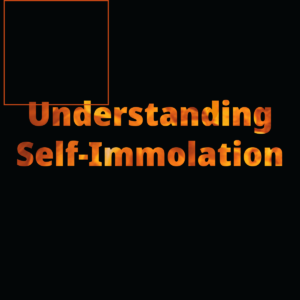3 minute reading time
In recent years, acts of self-immolation have occurred with increasing frequency, making it imperative for us to understand this extraordinary form of protest. While these acts are deeply shocking, they demand exploration—not only to ask why individuals would choose such extreme measures but also to examine the societal conditions that produce them. This is a neutral inquiry into the motivations behind self-immolation and the broader context in which these protests arise. The recent incident involving Matt Nelson only heightens the urgency of sharing this educational content, as we seek to better comprehend this method of protest and its implications for society.
In 2013 and 2015, the 14th Dalai Lama addressed self-immolation as a form of political protest, stating: “I think the self-burning itself [is a] practice of non-violence. These people, you see, they [could instead] easily use bomb explosive, [causing more casualties]. But they didn’t do that. Only sacrifice their own life. So this also is part of practice of non-violence.”
Self-immolation is often a public and political act, covered by the media, and is seen by some as an altruistic form of suicide for a collective cause. Unlike other forms of violent protest, it does not aim to harm others or cause material destruction.
A prominent example of self-immolation occurred during the Buddhist crisis in South Vietnam, where the majority Buddhist population faced persecution under the Catholic president Ngô Đình Diệm. The most famous case was that of Thích Quảng Đức, whose self-immolation in 1963 drew global attention. This act of protest became a symbol, and between 1963 and 1971, there were nearly 1,000 self-immolations, many of which took place in Asia and the United States in opposition to the Vietnam War.
An example of this practice inside the US was on November 2, 1965, when anti-war activist Norman Morrison set himself on fire below the Pentagon office of Secretary of Defense Robert McNamara to oppose U.S. involvement in the Vietnam War.
In more recent times, self-immolation has continued as a form of protest. David Stroh Buckel, a renowned LGBTQ rights lawyer and environmental activist, set himself on fire on April 14, 2018, to protest the use of fossil fuels. On Earth Day 2022, climate activist Wynn Alan Bruce followed a similar path, immolating himself outside the U.S. Supreme Court as a statement against climate change.
More recently, on December 1, 2023, a protester in Atlanta self-immolated outside the Israeli consulate, draped in a Palestinian flag, to protest the Israel–Hamas war. Also on February 25, 2024, U.S. Air Force member Aaron Bushnell set himself on fire outside the Israeli Embassy in Washington, D.C. In protest of U.S. support for Israel, Bushnell, shouting “Free Palestine,” livestreamed his act. In April we witnessed another act of self immolation outside of the Trump trial.
As we explore these acts of self-immolation, we must also confront deeper questions about the United States and its role in producing the very conditions that drive individuals to such extreme measures. In many ways, the U.S. practices necropolitics, wielding power over life and death through its history of violent colonialism and ongoing imperialist actions. Countless populations within the U.S.—Indigenous communities, Black and Brown people, and other marginalized groups—are surviving conditions that resemble modern-day genocide. How is the U.S. functioning as a death cult, where structural violence and systemic oppression normalize death and suffering? And how is it that we are witnessing an increase in what can only be described as ‘death performances’—individuals sacrificing their lives as a form of protest against a system that seems to value power and destruction over human life? These questions challenge us to reckon with the forces that shape our society and the lives of those within it.

